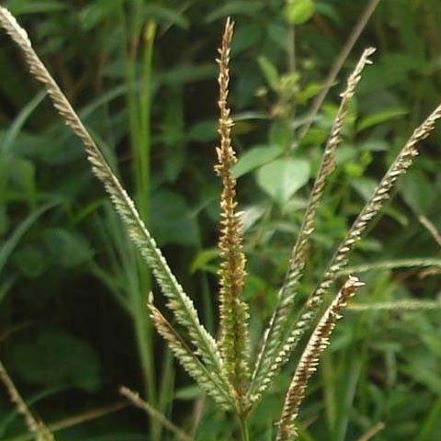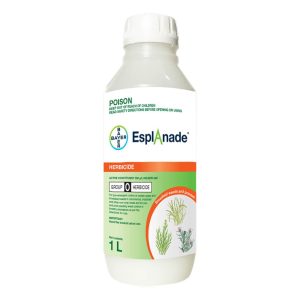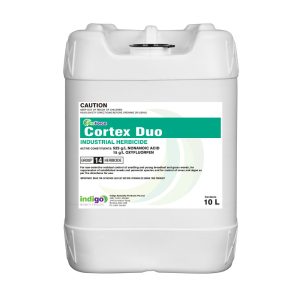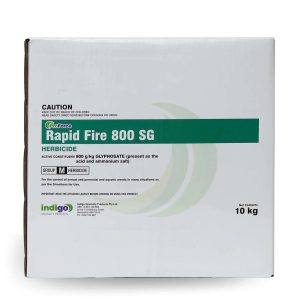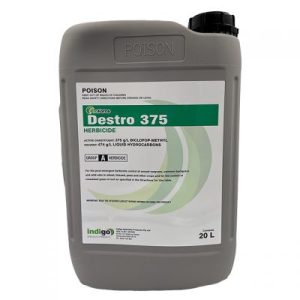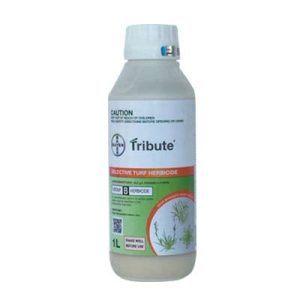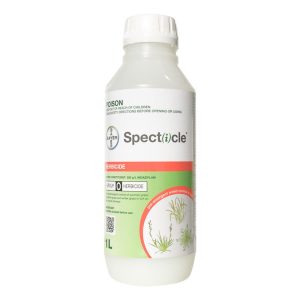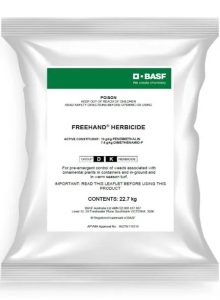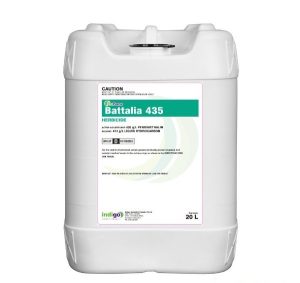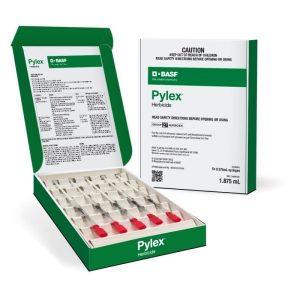Crowsfoot Grass (Eleusine indica)
Crowsfoot Grass is also known as Eleusine indica and Goosegrass. It has its name because its spiked flower looks like a crows foot. We discuss How to remove Crowsfoot from your lawn.
Crowsfoot grass is a Summer annual that you can easily identfy as it grows in “clumps”. It grows pretty flat to the ground, and has almost white flat sheathed stems and smooth strap like leaves.
Crowsfoot grass is a difficult to control weed that tolerates low mowing and thrives in nutrient deficient and compact soil conditions. It will starts to germinate when soil temperatures reach above 15°C and grows quickly.
Its seed heads appear usually from the late Spring to the early Summer, and have up to ten spikelets on each long stem.
In a poorly maintained lawn, if Crowsfoot Grass is left to seed and not controlled, it will tend to quickly spread through the entire lawn.
Crowsfoot is common in most Australian states including QLD, NSW, VIC, WA and the NT.
After you read this, you will be able to:
- Know what Crowsfoot Grass or Goosegrass looks like.
- Be aware what conditions favour Crowsfoot Grass.
- Know the best options to control Eleusine indica.
Why is Crowsfoot Grass a Problem Weed?
Crowsfoot Grass is considered a problem weed because:
- It is aggressive and competes with desirable grasses for water light and nutrients.
- Crowsfoot Grass is a prolific seed producer, and one plant can produce up to 120,000 seeds.
- Plants grow and mature rapidly. They produce viable seed in as little as six to eight weeks.
- Its tolerates low mowing heights, and thrives in low nutrient and compact soils.
- It is an incredibly efficient weed, and grows twice as fast as turf grass.
Crowsfoot Grass is a good indicator weed of compact soils. You often find Goosegrass in heavy wear areas, and it does well in poorly drained conditions.
More on turf weeds is in our weed ID chart.
How to Identify Crowsfoot Grass.
Crowsfoot Grass is a tufted, dark green summer annual grass with flat stems and shiny strap-like leaves.
- It germinates in the late Spring, and then grows through the Summer.
- The leaf blades of Goosegrass are smooth with a folded venation.
- It has white sheaths that lead to a short jagged, membranous ligule that divides at the centre.
Photosynthetic Pathway: C4 Weed.
Height: Crowsfoot plants can reach up to 20 cm in height and produce a large amount of seeds.
Leaf Length: The leaves of Crowsfoot Grass (Eleusine indica) are up to 30 cm long, and have a white-coloured leaf sheath at their base.
Leaf Width: Leaves are is 3 to 8 mm wide.
Spikelets: Goosegrass Grass grows 3 to 7 spikes that are 4 to 7 mm long. The seeds attach in a zipper-like appearance on the spike.
Reproduces: Crowsfoot reproduces by seeds, that germinate at or near the surface of moist soils, when soil temperatures reach 15°C to 18°C. The seed head tends to appear in the late Spring or early Summer.
Crowsfoot Grass (Eleusine indica) sets seeds even in closely mown turf. Each plant produces more than 50,000 seeds that are spread by the wind and rain, as well as machinery, animals and humans.
Goosegrass seeds are viable in the soil for several years.
Comments: There are no hairs on the leaf, but there are hairs at the base of the leaf. Goosegrass can germinate in a soil pH range from 5 to pH 10.
Habitat: Crowsfoot Grass (Eleusine indica) thrives in compact soils and heavy wear areas. It is a common weed in poorly drained soil and likes full sun. Crowsfoot is often seen on soils with relatively high P, K, Ca, and Mg.
How to Remove Crowsfoot Grass from Your lawn.
Management Calendar for Crowsfoot Grass.
Management Calendar for Crowsfoot | ||||||||||||
Annual sometimes Perennial | ||||||||||||
Month | Jan | Feb | Mar | Apr | May | Jun | Jul | Aug | Sep | Oct | Nov | Dec |
Germination | ||||||||||||
Flowering | ||||||||||||
Seeding | ||||||||||||
Hand Pull and remove before seed | ||||||||||||
Pre emergent herbicide | ||||||||||||
Post emergent herbicide | ||||||||||||
Cultural Control of Crowsfoot Grass.
A thick, healthy turf cover with no bare areas, inhibits Crowsfoot Grass (Eleusine indica) and its seed production. Other cultural options that avoid the use of chemicals include:
- Hand pull. Although it is difficult to hand pull due to its preference for compact soils, you can control Eleusine indica if you dig it up with a shovel. This is best done when the soil is moist, and obviously not the way to go if you have a serious problem.
- Mow. If you mow before Crowsfoot Grass goes to seed it goes a big way towards managing this grass weed.
- Relieve compaction. Crowsfoot Grass is a grass weed that thrives in compact soil and so efforts to relieve soil compaction will discourage it. Carry out aeration by hand or with a mechanical unit, and reduce traffic to improve the turf cover.
- Aim to core the turf when its actively growing so it recovers quickly. Any bare soil areas after you finish this will tend to favour weed encroachment.
- Give it time. Goosegrass is an annual that dies in frost in the Autumn or Winter. So in areas like Canberra and regional NSW if you keep on top of the seed the problem will reduce year on year.
- Shade reduces the growth of Crowsfoot Grass, so a vigorous, dense turf cover helps shade out this weed, and reduce its growth by up to 90%. Bearing this in mind selecting the right turf seed or turf type for your situation can be a signfiicant step toward managing this weed.
Chemical Control of Crowsfoot Grass from your lawn.
Selective post-emergents are available for Crowsfoot Grass, but your best option is to carry out pre-emergent control. Even with this though, Goosegrass in couch is more difficult to control than for example, Summer Grass.
Crowsfoot Herbicide Resistance.
Resistant populations has been reported to multiple herbicide modes of action including the following groups registered in Australia:
- Group 2: Foramsulfuron (Tribute Selective).
- Group 3: Dithiopyr (Dimension) and Prodiamine (Barricade).
- Group 5: Metribuzin (Metric).
- Group 9: Glyphosate (Roundup).
- Group 10: Gluphosinate (Finale).
- Group 14: Oxadiazon (Ronstar).
- Group 15: Metolachlor (Pennmag).
- Group 22: Paraquat and diquat
The herbicide resistance to Groups 2 and 3 is of the most concern, as these Groups are the most widely used weed control options in the Australian turfgrass industry.
Pre-emergents for Crowsfoot Grass.
Fortunately there are several pre-emergents that you can use to prevent Crowsfoot Grass. These include:
- Dithiopyr (Dimension).
- Prodiamine (Spartan, Barricade or onset 10GR)
- Oxadiazon (Echelon and Echelon Duo).
- Metolachlor (Pennmag).
Oxadiazon.
To safely use this on mature turf, you want as little contact between the herbicide and green leaf tissue. This means that ideally you should apply this on a granular carrier to dry turfgrass and water it in as soon as possible to move the herbicide into the soil.
With granulars the size of the granule (size guide number or SGN) is important. Smaller prills work much better, as large SGN particles don’t give the required coverage to ensure Crowsfoot Grass shoots encounter the herbicide as they emerge through the top of the soil.
Research has shown some transient injury when you apply oxadiazon to dew-covered turf. Also don’t apply this before a heavy rain event as it will result in the herbicide movement into standing water and then being absorbed by turf grass leaf tissue.
- When you use Oxadiazon at at normal rates, this controls Crowsfoot Grass better (91%) than Pendimethalin (69%), Dimension (69%), and Prodiamine (71%), at label rates.
- Summer Grass control is 80% or more when you use 1/2 rates of either Dimension or Pendimethalin with MSMA at the label rate. This is a lot higher rate of control than if you use Dimension or MSMA at normal rates.
- Pre-emergents like Onset 10GR, Barricade, Echelon, Echelon Duo, and Battalia prevent Crowsfoot Grass in warm-season grasses. Make sure that you use these at the correct rate and time to get good control.
- For example, a single application of a granular pre-emergent like Onset 10GR, Echelon or Echelon Duo, several weeks before germination gives season-long control of Crowsfoot Grass.
- If you use other products, you may need to make split applications to get season-long control.
Table of Pre-emergent Herbicides for Crowsfoot Grass.
Product | Active | Chemical Group | Rate/ Ha | African Love grass | Annual Ryegrass | Crabgrass | Creeping oxalis | Parramatta Grass | Paspalum | Summergrass | Winter Grass | Crowsfoot | White Clover | $ Cost / m2 | Longevity weeks |
Barricade | Prodiamine | 3 | 1-4L | 143-572 | 24 | ||||||||||
Onset 10GR | Prodiamine | 3 | 50-150Kg | 275-825 | 24 | ||||||||||
Echelon Duo | Oxadiazon | 14 | 300-400Kg | 2100-2800 | 12 | ||||||||||
Dimension | Dithiopyr | 3 | 1.75-3.5L | 280-560 | 18 | ||||||||||
Freehand | Pendimethalin + dimethenamid-P | 3 + 15 | 100Kg | 1585 | 12 | ||||||||||
Specticle | Indazaflam | 29 | 250ml | 495 | 32 | ||||||||||
Pennmag | Metolachlor | 15 | 2L | 45 | 8 |
Coring and Pre-emergent Control of Crowsfoot Grass.
The general consensus is that aeration after applying a pre-emergent damages the herbicide barrier. However, several studies indicate that this is not the case. A 2025 study on hybrid couch in Florida shows that aerification has no impact on the control of Crowsfoot Grass.
The excepton to this is late-summer coring of creeping bentgrass greens, which tends to create ideal conditions for Goosegrass germination.
Post-emergent Control of Crowsfoot Grass.
- Timing is important with all post emergent herbicides. Aim to use these after Goosegrass germinates.
- You will usually need several applications of these herbicides to give complete control of Crowsfoot Grass.
- You need good soil moisture to get the best results.
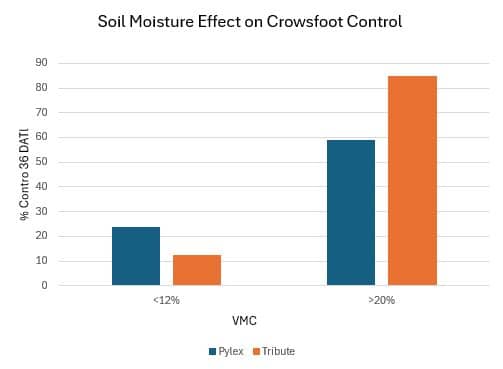
How soil moisture effects post emergent herbicide control of crowsfoot. The drier the soil the less the control with Pylex or Tribute herbicides
- ProForce Destro works well, and is in a different chemical Group from most of the other options. Destro gives better results with an MSO like ProForce Voltage, to overcome the waxy leaf surface of Crowsfoot Grass and give better contact.
- Envu Tribute Selective also gives good results.
- Foramsulfuron (Tribute Selective) is safe to use on Couch and Zoysia as an alternative option to ACCase-inhibitors like Destro. You need two applications for control on established Crowsfoot Grass. Due to potential antagonism don’t use Tribute with a non ionic surfactant or crop oil.
Non Selective Control of Crowsfoot Grass.
- Glufosinate-ammonium provides control for 4 to 6 weeks, but Crowsfoot regrows and recovers due to the limited movement of glufosinate.
- Glyphosate. You can use Glyphosate but if you use Glyphosate, and water quality is an issue then use ProForce Manta Ray.
The following are non-selective but also have a long term residual and stop re-growth of Crowsfoot Grass.
- Renegade. Renegade stops the germination of Crowsfoot for up to 12 months. This reduces the need for multiple herbicide applications.
- Numchuk Quad. This gives effective post and pre emergent control for up to 12 months
- Cortex Duo. Cortex Duo gives a rapid knockdown of Crowsfoot Grass, and residual control for up to 3 months. It is also safe to use around trees.
Table of Non Selective Crowsfoot Grass Herbicides.
Product | Active | Chemical Group | Rate/Ha |
Glufosinate 200 | Glufosinate-ammonium | 10 | 1-6L |
Rapid Fire 800 | Glyphosate | 9 | 0.9-1.35 Kg |
Numchuk Quad | Terbuthylazine + Glyphosate + Amitrole Oxyfluorfen | 5 + 9 + 34 + 14 | 20-25L |
Cortex Duo | Nonanoic Acid + Oxyfluorfen | 14 | 7L/1000L |
Renegade | Bromacil | 5 | 3.5-6.5Kg |

